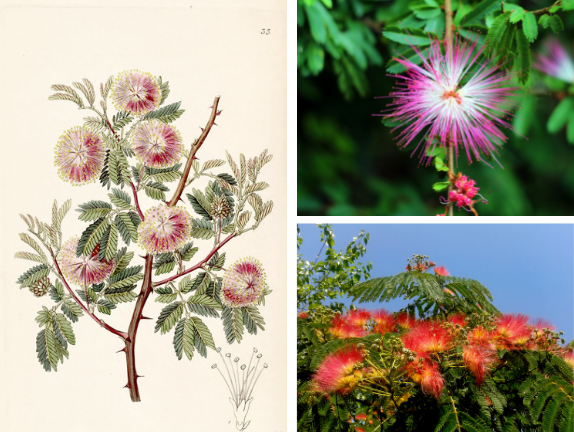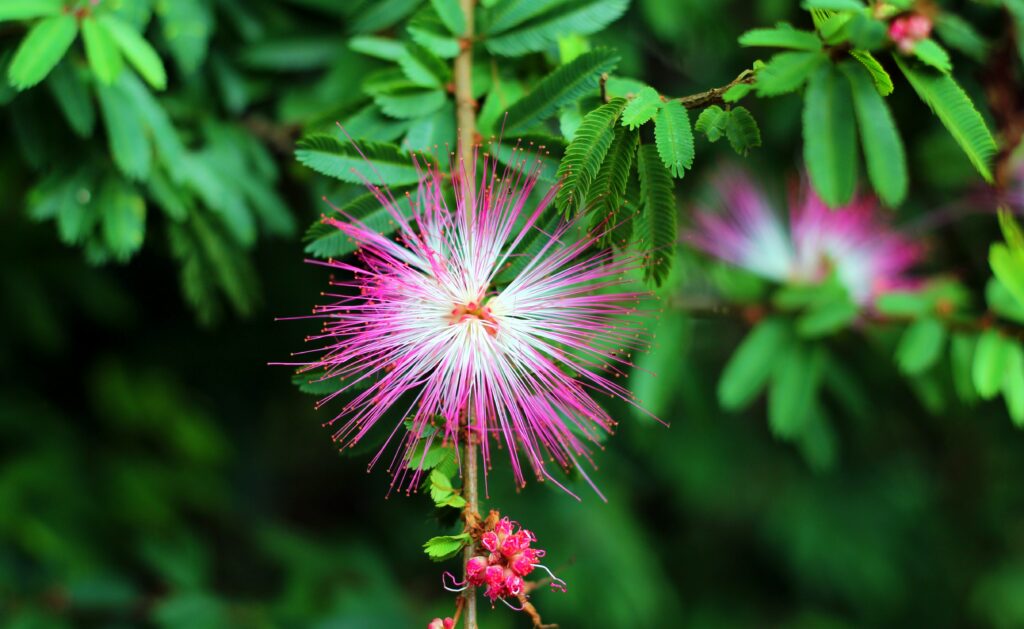Albizia julibrissin
Latin Name: Albizia julibrissin
Herb Class/Action: antioxidant, nervine, nootropic
Parts Used: bark, flowers
Flavors: sweet
Energetics: neutral
Traditional Benefits: supports mood + emotional health, supports a healthy mind, supports liver health, supports musculoskeletal health, supports the nervous system, supports a healthy flow of Qi, supports a healthy stress response
Mimosa is the bright light that illuminates your path towards ease and forgiveness. Native to Central and Eastern Asia, this flowering tree is popularly known as the “collective happiness herb” for its calming and harmonizing properties that help us connect to our heart space and those around us.*
If you could bottle up the feeling of a perfect Sunday morning—carefree, joyful, calm, happy—you’d get something like the effects of the appropriately named Mimosa herb. Harvested for both its flowers and bark, this tree which is native to Asia has been used as a traditional remedy since at least 200 AD.
In TCM, Mimosa is said to calm the mind, lift the spirit, and balance the mood — including frustration and “emotional backlog” related to stagnant Liver Qi. The bark is most commonly used in herbal preparations, but the flowers may also be used as they have a similar, but milder effect. Mimosa is categorized as a calming “spirit herb,” said to help harmonize emotions while anchoring and lightening the spirit, to balance one’s mood and frame of mind. It’s commonly recommended for deficient Yang Qi, often seen in someone who may be feeling stagnant and “cold,” not only physically but mood-wise as well.

On a physical level, Mimosa is shown to support normal, healthy levels of serotonin and GABA—both neurotransmitters that regulate mood and memory, among other functions. It may help provide support for restful sleep, a healthy outlook, healthy levels of anger, frustration, and anxiousness, while also supporting our resilience to occasional stress.
In herbal formulas, Mimosa is utilized to soften the grief and heaviness we so often carry through life. Even when direct loss is not experienced, grief comes in many forms – through unexpected changes in our path, moving, letting go of ideas and plans that no longer resonate, and changes in friendships and relationships. Mimosa is the heart-gladdening flower that helps us process and move through the seasons of life with greater
courage and ease.
In TCM, Mimosa is known as the “happiness herb” and “collective happiness bark” for its
mood-and-spirit lifting properties.

